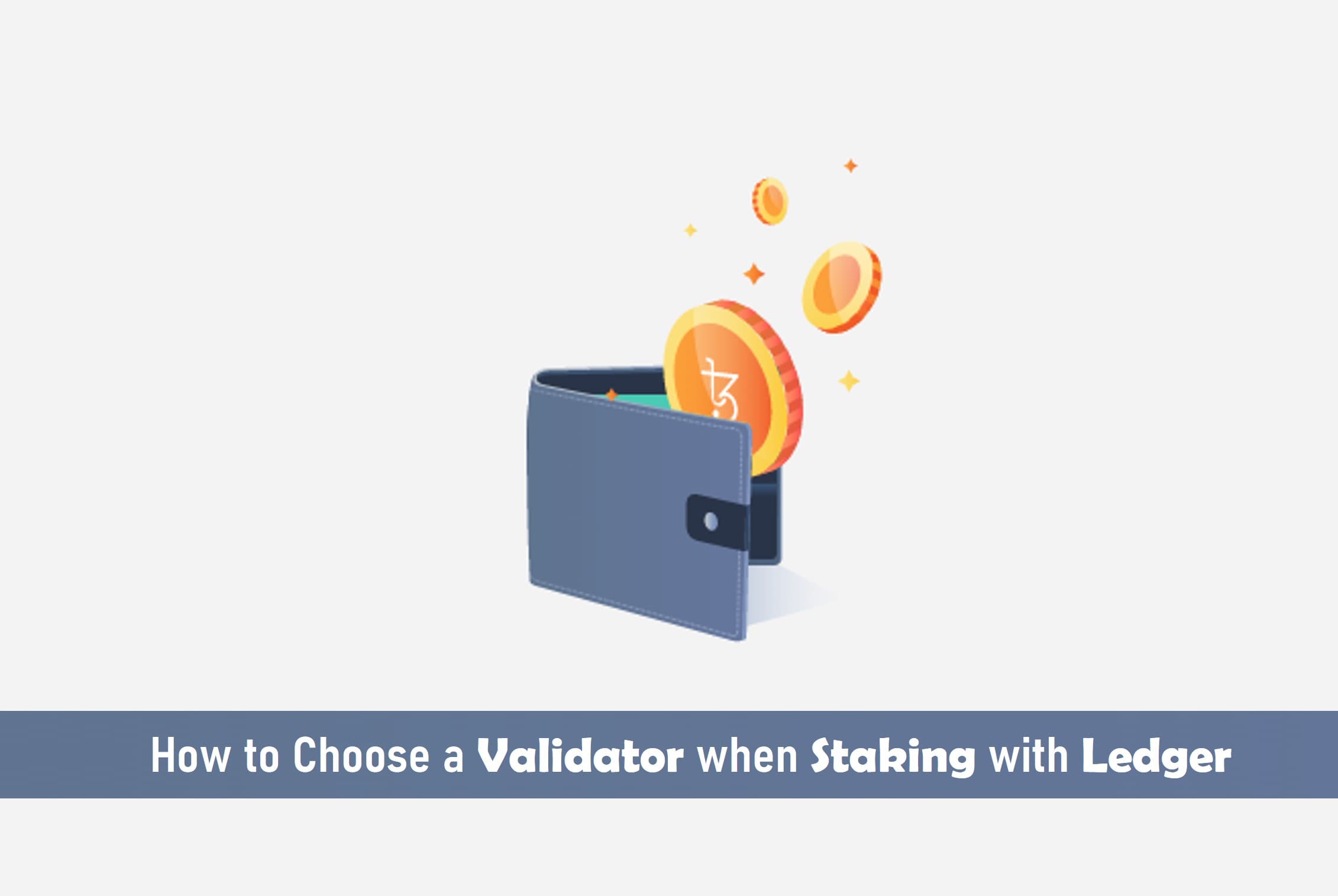
Staking with Ledger
Ledger is considered the industry standard for hardware wallets. The Ledger Nano has two very popular models: Nano X and Nano S.
In this article, Polkadot(DOT)would be used as the token to critically explain how validators are chosen when DOT is staked with Ledger.
Firstly, Staking is the process through which a blockchain network user ‘stakes’ or locks their cryptocurrency assets on a network as part of the consensus mechanism, thus ensuring the security and functionality of the chain.
Secondly, a Validator is someone who verifies blockchain transactions and adds them to the distributed ledger.
Hardware wallets are considered the safest at the moment, Ledger wallets are built on a secured chip and provides full isolation between private keys and hack-prone smartphones or computers.
You have complete control over your assets when you stake, which means you don’t have to deposit them in on soft wallets or Exchange generated wallets.
SEE ALSO: How to Pick the Right Polkadot Validators
SEE ALSO: Can a Hardware Wallet Truly Get Hacked Without PINs?
SEE ALSO: What Cryptos Can Be Staked On Coinbase
SEE ALSO: Ledger Powered Crypto Debit Card (What You Need To Know)
Key Takeaways
• The general ledger vote of validators occurs when you want to generate income from participation, and one way to do this is by nomination or delegation.
• As a nominator, if you just want to know the profit each validator has made over an era, you can go to the target section of the staking page, specifying the number of tokens you want to check.
The Ledger also supports the simultaneous placement of up to 7 different cryptocurrencies in which Polkadot is one, allowing anyone with a diversified portfolio to receive rewards for multiple assets in the same portfolio.
The general ledger vote of validators occurs when you want to generate income from participation, and one way to do this is by nomination or delegation.
Nominators defend the relay chain by choosing good validators and staking on DOT.
You may have a DOT account and would like to receive a new DOT. You can do this as a validator that requires a 24/7 node by specifying one or more validators.
In doing so, you become a nominator for the validators of your choice. Choose your validators carefully.
If they don’t work as they should, their rating will be downgraded and you will also lose DOT. However, if they follow the rules of the network, you can share the staking rewards they generate.
SEE ALSO: How to Stake Cardano On Ledger Nano Wallet
SEE ALSO: How to Create Your Own Cryptocurrency for Free
Although your DOTs will be placed as directed by the validators, they are “locked” (linked).
You can receive a new DOT into your account, but you cannot place bets as a validator or transfer DOT from your account. You can cancel the nomination at any time to stop staking your funds.
Polkadot has 28 days before a deposit can be transferred after an optional transaction.
The Election Solution Set
When determining which validators in the set are active and which nominators are nominating them, a very large chart is created in which the nominators are compared with the corresponding validators.
This “decision set” is computed off-chain and sent to the chain, which means it must fit inside a single block.
If there are a large number of nominators, this means that some nominators should be excluded. The nominators are now sorted by the number of DOTs delivered, and those with more DOTs will have priority. This means that if you bet with a small amount of DOT, you may not be rewarded.
This minimum number dynamically depends on the number of validators, the number of nominators, and other factors.
Receiving Rewards
If you have nominated more than one genuine validator candidate, at least one of them has been selected and nominated with enough stakes to get into the solution set.
Your total participation will be fully shared among one or more validators. However, you may not be rewarded if you nominate too few validators and no one gets elected, or if your participation is low and you only select oversubscribed validators, or if the validator you nominate has 100% commission.
You should choose as many trusted validators as possible (up to 16) to reduce the risk that none of the validators you specify will be selected. Rewards are lazy. Someone has to initiate a payout of the validator for the reward to go to all validator candidates.
What to Take into Consideration when Nominating
One thing to keep in mind as a nominator is the validator’s commission. The Commission is the percentage of the validator’s reward received by the validator before the reward is split among the nominators.
As a nominator, you might think that the commission is the lowest, but this is not always the case.
Validators must be able to break even to continue to operate sustainably. Independent validators who rely on commissions to cover server costs help keep the network decentralized.
Commissions are only one piece of the puzzle that you need to consider when choosing validators for your nomination.
As a nominator, if you just want to know the profit each validator has made over an era, you can go to the target section of the staking page, specifying the number of tokens you want to check. However, this does not guarantee an accurate way to measure the overall performance of the validator.
There is an “own stake” of a validator worth considering. This refers to the amount of DOT used by the validator.
SEE ALSO: Best 5 Smart Contract Platforms for Polkadot DApp Dev
A higher “single stake” amount can be considered as having more “skin in the game”, this can improve reliability. However, a validator not having a large amount of “own stake” is not inherently unreliable, since a validator could be nominating from a different address.
Filter out Validators with Undesirable Traits
On the targets page, you can filter out validators whose characteristics may indicate problems with their assignment. You can turn these filters on and off to narrow the range of validators you need to specify.
It is important to note that none of these traits are necessarily “bad”. However, depending on the method of choosing your validator, these may be traits that you want to filter out.
• Single from Operator: Do not display validator groups performed by one operator.
• No 20% + comm: Do not show validators with a commission of 20% or more.
• No at Capacity: Do not show any validators that are currently running at full capacity (i.e., the number of subscriptions may be exceeded).
• Recent Payouts: Only show validators who have made a recent payment. Please note that anyone can cause a payout to occur; it does not have to be the operator of a validator.
• Only Elected: It shows only validators that are currently in the active set (that is, they were selected to generate blocks at that epoch).
• Only with an Identity: Only show validators with the established identity. Please note that this identity does not need to be verified by the registrar for the validator to appear on the list.
Reviewing Your Validator’s History
How a validator has performed in the past can be a good indicator of how it will perform in the future. An example of problematic behavior might be: If a validator is often offline, his candidates are likely to receive fewer rewards than others.
More importantly, when multiple validators become unavailable, nominators placing stakes with them will be disabled. Hence, to be a quick-witted nominator, it is best to consult their stories to see statistics such as generated blocks, awards, and streaks, as well as their identities (if they have already confirmed this) can be installed).
In addition, the nominator must conduct extensive validator research. Nominators should visit the validator’s website to find out who they are, what infrastructure settings they are using, their reputation, the validator’s vision, and more.
Remember the Risks of Single Operators with Multiple Validators
Remember that slashing is an additive function. The more validators are disabled or make mistakes during a given session, the more severe the punishment. Because organization-controlled validators are more at risk of “sync” failures, their appointment carries a higher risk when the majority of the funds are allocated.
In general, it is safer to specify validators whose behavior is independent of others in as many ways as possible (various equipment, geolocation, owners, etc.).
SEE ALSO: 7 Best Wallets for Tezos (XTZ) Safe Storage and Staking
Avoid Oversubscribed Validators
If you are not nominating with a large number of DOTs, you should avoid oversubscribed validators. It is not always easy to calculate whether the subscription of the selected validator will be exceeded in the next session.
One way to avoid selecting validators that might be oversubscribed is to filter out suitable validators on the targets page.
Finally, if you have a very small number of DOTs, you may not be able to make yourself eligible for the electoral pool.
The comparison of the nomination with the validator should fit into a single block, and if there are too many nominations, the lowest nominators will be discarded.
This value is dynamic and will change over time. If you look at the fewest nominations occurring on the current validators, you can get a good idea of how much DOT it is likely to take to get your nominations to earn you rewards.
SEE ALSO: World Most Popular Hardware Wallet-Ledger Nano S and Nano X
Frequently Asked Questions (FAQ)
1. Is it safe to stake DOT on Ledger?
It is very much safe to stake DOT on Ledger as you can store dot in your ledger hardware wallet.
2. How much does it cost to stake Polkadot?
Staking requires a minimum of 80 DOT staked funds on Polkadot .
3. How long does a DOT token transfer take?
It takes about 28 days to do a DOT token transfer.
4. Is Polkadot on Ledger Live?
Yes, Polkadot and its DOT token is now on the ledger live application.
Final Thoughts
Choosing a validator when staking a ledger is required to succeed and as such, one should always endeavor to nominate as many validators as possible.
The ledger live, Ledger Nano X, and Ledger Nano S are two different hardware wallets that are very safe for storing Polkadot and other cryptocurrencies.
To know more about Ledger Nano wallets, see this post
Read More





